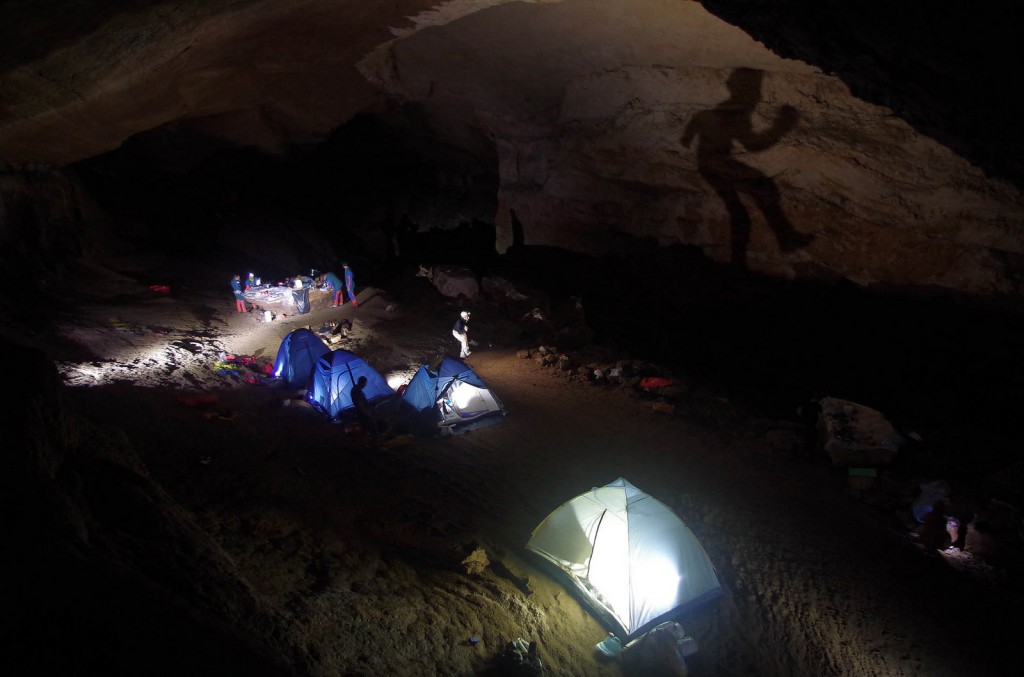The human body is amazing, capable of adapting quickly to new environments and surroundings. This is a gift for explorers, allowing them to adjust and adapt while they push the boundaries of human understanding in harsh and alien environments, and efficiently document their findings to share this knowledge. Your daily routine, lighting conditions, sleeping and living conditions, food, new smells, and other activities all combine to form an adaptation profile unique to a particular exploration venue. We found this to be true in a cave, just as it has been on the Shuttle, Soyuz and International Space Station.
The Sa Grutta CAVES experience was similar to spaceflight in many ways. The daily routine on the Station follows a timeline of activities largely oriented toward science experiments. In the cave, the team also followed a daily plan, working long days to push the survey forward and document knowledge of the topography of the cave. As we extended our survey, samples were taken for later analysis of water chemistry, microbiology of soil and surfaces, and atmosphere for CO2, temperature, and humidity.
As in spaceflight, imagery was a big part of our daily activity, and photos were taken to document survey points, samples and sampling sites. The views of Earth from space are quite spectacular, but we were also struck by the sheer beauty of the ancient structures inside the cave. These views take a bit more work, requiring strategic placement of lights, but in some cases are just as breath-taking. As it was on the Space Station, the end of our days were spent organizing data and images to make a coherent set of information for the ground team – or in this case – the surface team. Communication with the surface team was limited to twice a day, more like what may be expected for planetary exploration, so questions had to be organized and formulated carefully.
In space and in the cave, the familiar 24 hour day has no natural meaning – the day/night cycle is artificially created by the timeline and the use of artificial lights. For crew health and to avoid fatigue, a schedule is kept by the exploration and surface teams to maintain a circadian pattern that supports rest. Living and sleeping in these unfamiliar environments also requires adaptation. Whether sleeping in a small sleeping bag on the hard cave floor, or floating in a sleeping bag 400km above the Earth – it is not the same as the comfy bed waiting for you at home.
Food also requires a period of adaptation. Due to limitations of making food that won’t spoil, food on orbit and in the cave can become a bit bland and monotonous. As a result, a smuggled bottle of Tabasco sauce can lift the culinary standards and crew spirits just as effectively in both locations.
After seven days of strenuous work in the cave, the transformation was complete. We were transformed into cavemen – sporting beards, dirty clothes, and a pungent aroma that we had become accustomed to. The lights on our helmets weren’t on the highest settings because our eyes had adjusted to the environment, we walked along the rocks and up the ropes much more quickly, we had crisp communication in the cave environment, and we had refined our techniques and packing to quickly and efficiently explore the cave. In short, we had adapted to the new environment to be efficient explorers, but it was time to come home.
When we came out of the cave yesterday, bright sunlight, blue skies, green trees and the sweet smell of home welcomed us. For those of us who have flown in space, it was reminiscent of the moment when the door to our Shuttle or Soyuz was opened, and those familiar sights and sounds of Earth filled the cabin – immediately welcoming us home. We relished the moment, but as with any explorer, we look forward to the future where we might once again have the opportunity to miss the sweet smell of home…
Caves2013 crew





Discussion: no comments